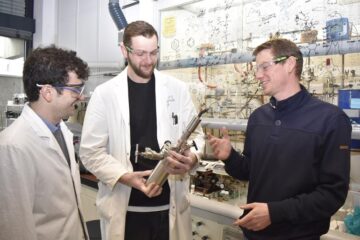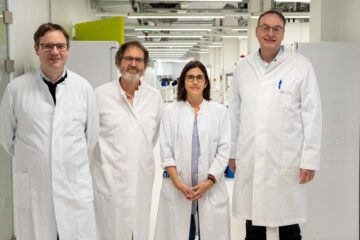A Key for Succes: Removing Intellectual Property Bottlenecks for Commercialization of Life Science Research

This will significantly improve the possibilities for successful trans-national knowledge transfer in ScanBalt BioRegion.
The indicators targets four main dimensions namely technology, intellectual property, the market situation and the exploitation of technology transfer options. The development of the indicators is part of the EU FP 7 Co-funded project Bridge-BSR.
The Steinbeis-Transfer-Institute for IP Management in collaboration with Steinbeis Team North East has developed a set of indicators for the assessment of commercially viable public-private collaborative projects in Life sciences.
This will significantly improve the possibilities for successful trans-national knowledge transfer in ScanBalt BioRegion. The indicators targets four main dimensions namely technology, intellectual property, the market situation and the exploitation of technology transfer options. The development of the indicators is part of the EU FP 7 Co-funded project Bridge-BSR.
Frank Graage, Head of Steinbeis Team North East says “With the development of indicators we have taken a major step forward towards bridging Life science academic research and SMEs in ScanBalt BioRegion. We will now implement the indicators within e.g. environmental life sciences as this has priority in order to support the development of a strong eco-industrial sector.
Overall, this promotes an effective Eco-agenda for the Baltic Sea Region and assist to establish the region as a global frontrunner within a sector, which is likely to boom the coming years”.
For further information on the full report please contact
Stephan Hundertmark
Tel +49 (0) 89 / 74 63 92 – 19
e-mail stephan.hundertmark@sti-ipm.de
Media Contact
All latest news from the category: Life Sciences and Chemistry
Articles and reports from the Life Sciences and chemistry area deal with applied and basic research into modern biology, chemistry and human medicine.
Valuable information can be found on a range of life sciences fields including bacteriology, biochemistry, bionics, bioinformatics, biophysics, biotechnology, genetics, geobotany, human biology, marine biology, microbiology, molecular biology, cellular biology, zoology, bioinorganic chemistry, microchemistry and environmental chemistry.
Newest articles

Efficient, sustainable and cost-effective hybrid energy storage system for modern power grids
EU project HyFlow: Over three years of research, the consortium of the EU project HyFlow has successfully developed a highly efficient, sustainable, and cost-effective hybrid energy storage system (HESS) that…

Safer alternative for an explosive reaction
The chemical industry has been using a reaction with explosive chemicals for over 100 years – now Mülheim scientists have discovered a safer alternative. The Ritter Group of the Max…

How immune cells communicate to fight viruses
Chemokines are signalling proteins that orchestrate the interaction of immune cells against pathogens and tumours. To understand this complex network, various techniques have been developed to identify chemokine-producing cells. However,…





















